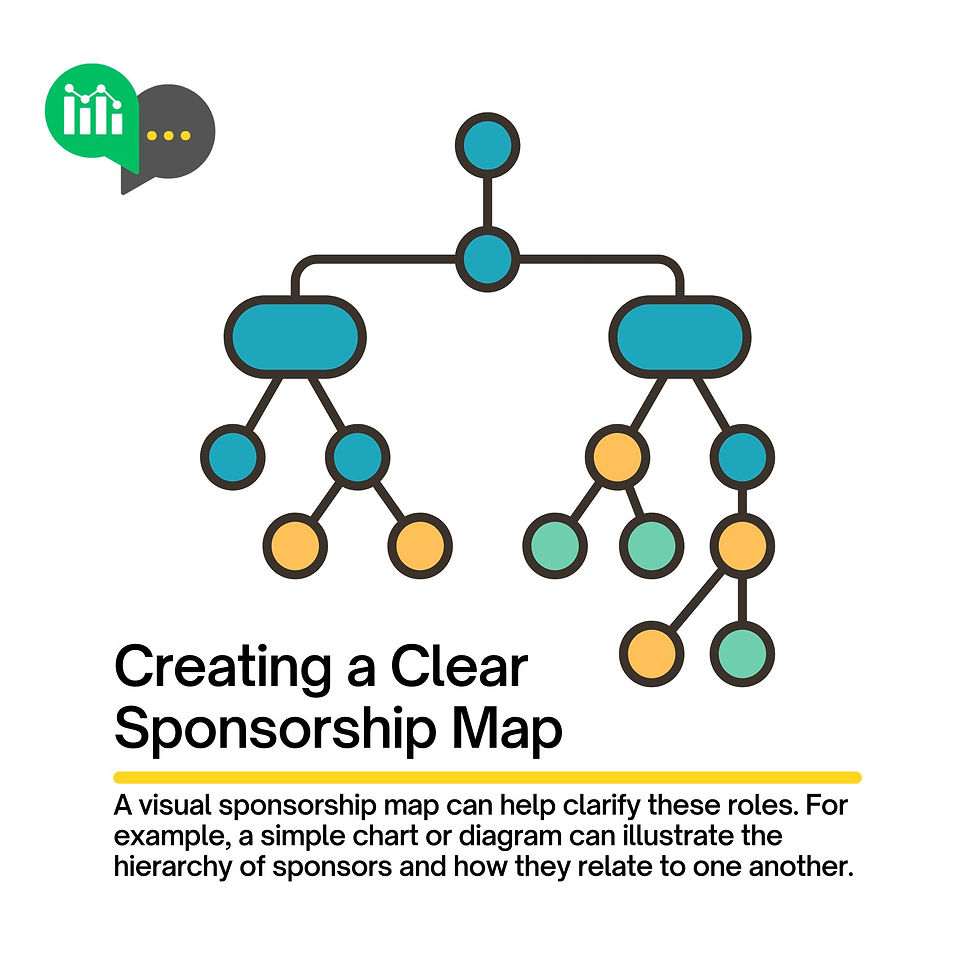
In our previous post, we discussed how conducting a cultural assessment lays the foundation for a successful transformation toward operational excellence. The next critical step is mapping out the key individuals who will support and champion this initiative—both directly and indirectly.
These are your sponsors, and understanding their role and influence is essential for the success of any cultural shift. This process is also an ideal time to involve a business coach whose expertise in navigating leadership dynamics and facilitating change is invaluable.
What is a Sponsorship Spine?
A sponsorship spine is a comprehensive framework that involves identifying and mapping direct and indirect sponsors who are crucial to driving cultural transformation. Direct sponsors are those individuals in leadership who will actively support and push the change forward. Indirect sponsors, on the other hand, may not be directly involved in day-to-day decision-making but still influence the initiative's overall success through their support, feedback, or resources. This spine, or framework, provides a clear structure for understanding and leveraging the influence of these sponsors.
By clearly defining and understanding the roles of these sponsors, you not only create a more robust network of support but also empower yourself and your team. This ensures the transformation isn't just a top-down initiative but one that resonates throughout the organization, giving everyone a sense of control and confidence in the process.
Why Mapping Sponsors is Crucial
Mapping sponsors helps:
Align Leadership: By identifying key leaders who need to be on board, you ensure everyone is working toward the same goal and understands their responsibilities in driving change.
Build Accountability: Knowing who is responsible for championing specific areas of the transformation helps build accountability. Direct sponsors ensure progress, while indirect sponsors support the initiative from behind the scenes.
Mitigate Resistance: Resistance to change is natural. By mapping sponsors, you can anticipate potential resistance areas and address them early by engaging the right individuals.
Secure Resources: Many transformations require significant resources, whether time, personnel, or finances. Strong sponsors ensure that these resources are allocated correctly and that there is ongoing support for the initiative.
Identify Hidden Gaps: One critical insight many organizations discover during sponsorship mapping is the gaps in representation—often related to overlooking certain areas that may seem irrelevant initially. This can happen if the mapping is done only with familiar colleagues or immediate team members. Including a diverse group of people from different departments, such as HR, can provide crucial insights about who is who in the organization and reveal sponsors you might otherwise miss.
Formalize Support with Agreements: This step also allows us to identify who needs to sign a formal or informal contract agreement to join the initiative. Depending on the initiative, these agreements may involve a sponsor's resources, time, or commitment to driving the change forward. In future posts, we'll explain the importance of these sponsor agreements and how to establish them.
How to Map Direct and Indirect Sponsors
Start by looking at the organizational structure and asking:
Who are the leaders directly responsible for the success of the cultural transformation?
Which individuals have the power to influence the decision-making process?
Are there individuals or departments that may not be directly involved but whose support will be critical (e.g., HR, finance, or other vital departments)?
Expanding your typical circle during this exercise is essential. Including HR, for instance, can help address hidden gaps in understanding roles and influence within the organization. This broader approach ensures you capture perspectives that may be overlooked when working solely with familiar teammates.
Once you have identified these individuals, map them out based on their roles:
Direct sponsors: These are typically senior leaders or department heads directly involved in the transformation efforts.
Indirect sponsors: These individuals may not be involved in the day-to-day operations but can provide critical support, resources, or influence.
Creating a Clear Sponsorship Map

A visual sponsorship map can help clarify these roles. For example, a simple chart or diagram can illustrate the hierarchy of sponsors and how they relate to one another. This tool becomes invaluable when communicating the strategy with other stakeholders and ensuring a shared understanding of who is responsible for what.
The Role of a Business Coach

A business coach plays a crucial role in facilitating the sponsorship spine process by:
Guiding the Mapping Process: The coach can help facilitate discussions and workshops that ensure all relevant sponsors are identified. They provide an objective viewpoint, ensuring no key stakeholders are overlooked and that the mapping includes perspectives beyond the usual leadership circle.
Encouraging Cross-Functional Participation: The coach will enable leadership to include departments such as HR, finance, and other supporting roles, which are often overlooked. The coach will ensure the mapping process is thorough, inclusive, and unbiased.
Ensuring Accountability: Business coaches can help clarify the responsibilities of both direct and indirect sponsors, making sure each individual knows their role in the transformation process. The coach can also track progress, providing follow-up support to meet commitments.
Building Relationships and Trust: Having a coach involved can smooth communication between sponsors, ensuring trust is built across different levels of leadership. Coaches often serve as neutral third parties, helping mediate conflicts and aligning everyone toward the same goals.
Next Steps: Stakeholder Analysis
Once the sponsorship map is complete, the next crucial step is to conduct a stakeholder analysis. This analysis is a vital part of the process, as it helps you gauge the environment surrounding each sponsor and understand their influence, motivations, and any potential challenges in their involvement.
In the next blog post, we'll explore how stakeholder analysis can refine your approach and ensure you address the correct concerns and opportunities to make the transformation successful.
This post will provide valuable insights that will help you navigate the next steps of the transformation process.
Comments